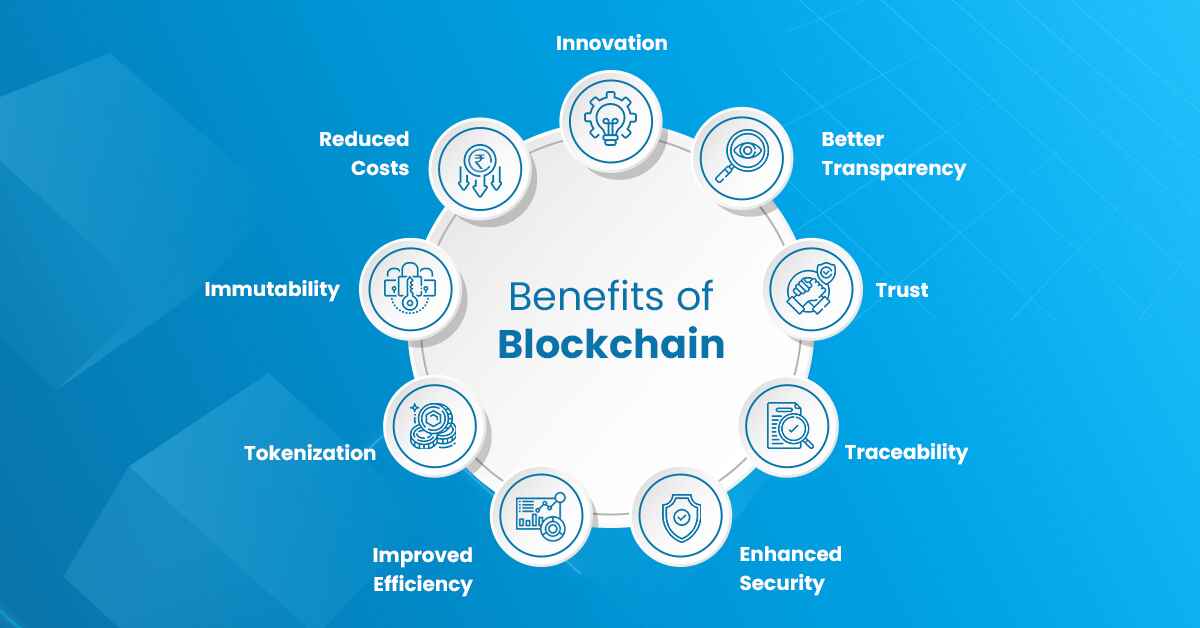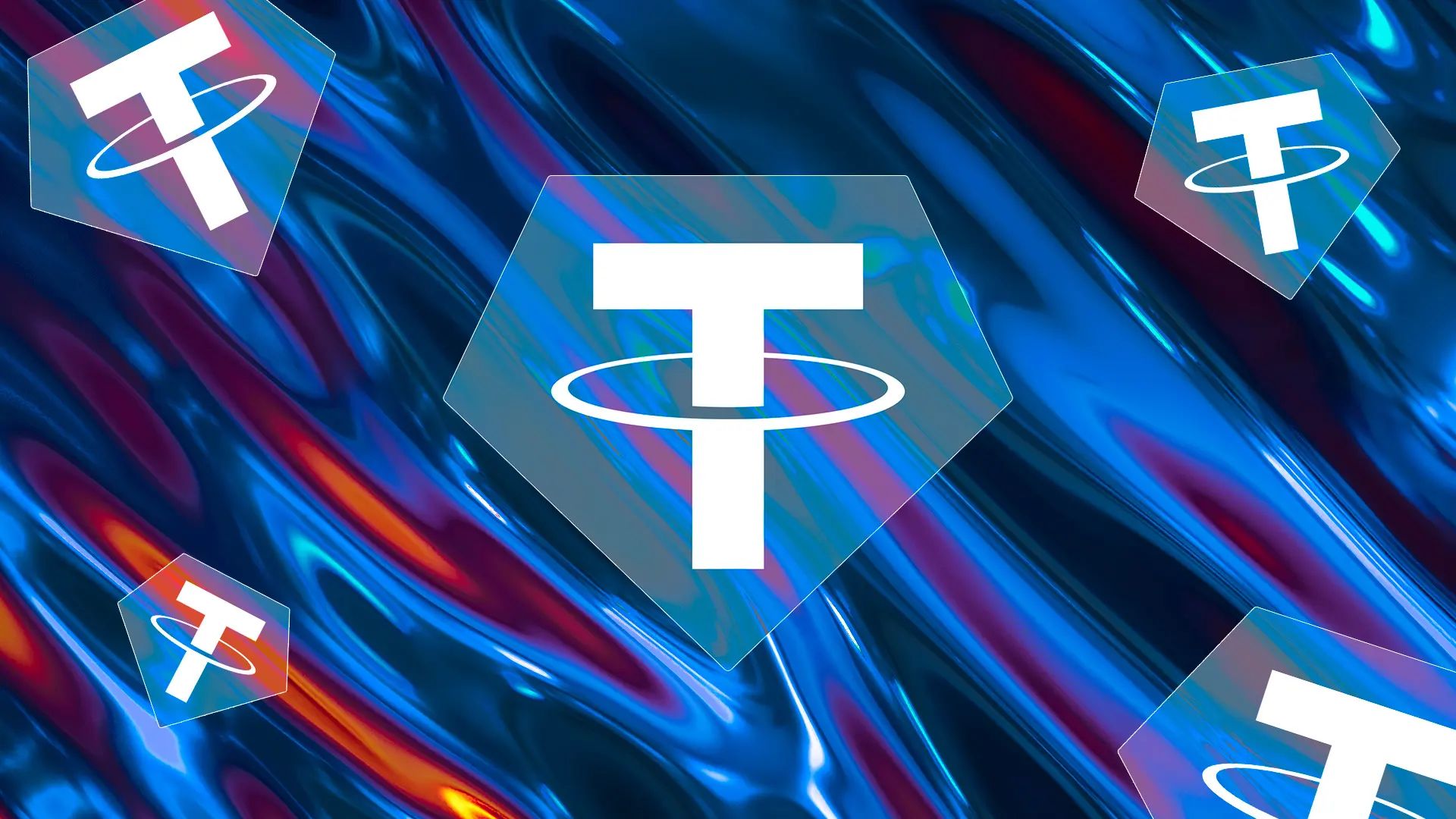Introduction
A blockchain is a revolutionary technology that has gained immense popularity in recent years. It is a decentralized and distributed ledger system that enables the secure and transparent recording of transactions. Originally developed for supporting digital currencies like Bitcoin, blockchain technology has now found applications in various sectors such as finance, supply chain management, healthcare, and more.
At its core, a blockchain is essentially a chain of blocks, where each block contains a list of transactions. This decentralized nature of blockchain ensures that no single entity or authority has control over the system, making it resistant to censorship and tampering. The transparency and immutability of the blockchain make it a trusted and efficient solution for recording transactions.
But have you ever wondered where exactly these transactions are recorded in a blockchain? In this article, we will explore the intricate details of how transactions are stored and secured in a blockchain, uncovering the inner workings of this groundbreaking technology.
So, let’s dive in and discover where transactions are recorded in a blockchain!
What is a blockchain?
A blockchain is a decentralized and immutable digital ledger that records transactions across multiple computers. It consists of a chain of blocks, with each block containing a list of transactions. The blockchain technology was initially introduced as the underlying technology for cryptocurrency transactions, such as Bitcoin.
What sets a blockchain apart from traditional databases is its decentralized nature. Instead of relying on a central authority to validate and store transactions, a blockchain distributes the responsibility among several participants known as nodes. These nodes work together to reach a consensus on the validity of transactions and maintain the integrity of the network.
Another important characteristic of a blockchain is its immutability. Once a transaction is recorded in a block and added to the chain, it becomes virtually impossible to alter or delete. This immutability is achieved through cryptographic techniques, ensuring the integrity and security of the data.
Furthermore, transparency is a key feature of a blockchain. All transactions recorded in a blockchain are accessible to all participants in the network. This transparency fosters trust among users and eliminates the need for intermediaries in many scenarios.
While originally designed for financial transactions, the potential applications of blockchain technology extend far beyond cryptocurrencies. The concept of a blockchain can be applied to various industries, including supply chain management, healthcare, voting systems, and more. Its decentralized and secure nature makes it a promising solution for improving transparency, efficiency, and trust in many areas of our lives.
In the next section, we will explore how exactly a blockchain works and the process behind recording transactions in this innovative technology.
How does a blockchain work?
A blockchain operates on the principles of decentralization, transparency, and immutability. Understanding how it works requires delving into its key components and processes:
1. Decentralized Network:
A blockchain consists of a network of computers, known as nodes, that communicate with each other to validate transactions and maintain a consensus on the state of the blockchain. Each node has a copy of the entire blockchain, ensuring that no single entity has complete control over the network.
2. Consensus Mechanism:
Nodes in a blockchain network use a consensus mechanism to agree on the validity of transactions and maintain the integrity of the blockchain. Popular consensus mechanisms include Proof of Work (PoW) and Proof of Stake (PoS), which require nodes to perform certain calculations or stake their cryptocurrency to participate in the consensus process.
3. Block Creation:
New transactions that occur within the network are grouped together into a block. A block contains a set of transactions, along with a unique identifier called a hash, the hash of the previous block, and a timestamp. Miners or validators compete to create a new block by solving a complex mathematical puzzle based on the transactions in the block.
4. Block Validation:
Once a miner successfully solves the puzzle and creates a new block, the block is broadcasted to the network for validation. Other nodes in the network verify the validity of the transactions within the block and ensure that the block adheres to the consensus rules of the blockchain.
5. Block Addition:
Once a block is validated, it is added to the blockchain, becoming a permanent part of the ledger. The block is linked to the preceding block through its Hash, forming a chain of blocks. This linking ensures the immutability of the transactions, as altering a block would require changing the subsequent blocks in the chain, which is computationally infeasible.
This process of block creation, validation, and addition continues as new transactions occur within the network, resulting in a continuously growing chain of blocks containing a complete record of all transactions.
The next section will explore in detail where exactly transactions are recorded in a blockchain and how they are stored securely.
Where are transactions recorded in a blockchain?
In a blockchain, transactions are recorded and stored within blocks. These blocks form a sequential chain, with each block containing a set of transactions. The organization and storage of these blocks vary depending on the specific blockchain protocol in use.
Each transaction within a block includes essential information such as the sender’s address, the recipient’s address, the amount transferred, and any additional data specific to the transaction. The transactions are grouped together in a block and linked to the previous block through a unique identifier called the hash.
The blocks, along with their transactions, are distributed across the network of nodes in a blockchain. Every node maintains a complete copy of the blockchain and synchronizes with other nodes to ensure consensus on the contents of the blockchain.
The Role of Blocks in a Blockchain
Blocks serve as containers for transactions within a blockchain. They play a crucial role in ensuring the security, integrity, and immutability of recorded transactions. Each block contains a header and a list of transactions. The header includes metadata such as the block’s hash, the hash of the previous block, a timestamp, and other relevant information.
The blocks are linked together through their hashes, creating a chronological chain. This linking confirms the order of transactions and makes it almost impossible to modify past transactions without affecting the subsequent blocks, ensuring the immutability of the recorded data.
Moreover, the block structure allows for efficient verification and validation of transactions. Nodes within the network can easily confirm the integrity of a block by checking the hash of the block and the previous block’s hash. This verification process prevents malicious actors from tampering with the blockchain by manipulating or deleting transactions.
Transaction Confirmation and Validation
Before a transaction becomes a permanent part of the blockchain, it goes through a confirmation and validation process. Miners or validators in the network verify that the transaction abides by the consensus rules of the blockchain and is not a duplicate or fraudulent entry.
The confirmation and validation process depends on the consensus mechanism employed by the specific blockchain. For example, in a Proof of Work (PoW) blockchain like Bitcoin, miners solve complex mathematical puzzles to validate transactions and create new blocks. In a Proof of Stake (PoS) blockchain, validators with a significant stake of cryptocurrency confirm and validate transactions.
Once a transaction receives sufficient confirmations and validation from the network, it is considered secure and permanently recorded within a block. From this point onwards, the transaction becomes an immutable entry in the blockchain, visible to all participants.
The next section will delve into the specifics of transaction details, format, and how they are stored in a blockchain.
The Role of Blocks in a Blockchain
Blocks play a pivotal role in the functioning of a blockchain. They serve as containers that hold a collection of transactions, providing a structure that ensures security, integrity, and immutability within the blockchain system.
Each block in a blockchain consists of a header and a list of transactions. The header contains important metadata, including the hash of the block, the hash of the previous block, a timestamp of when the block was created, and other relevant information. This header is crucial for maintaining the structure and chronological order of the blockchain.
One of the key responsibilities of blocks is to establish a link between each other. Each block has a unique hash, which is generated based on the transactions within the block and the header information. Additionally, it includes the hash of the previous block, thus forming a chain of blocks.
This linking mechanism is pivotal in ensuring the immutability of the blockchain. Once a block is added to the chain, altering or tampering with the data within that block would require changing the hash of the block. However, this would break the link with the subsequent blocks, alerting the network to the attempted manipulation. The computational power required to modify multiple blocks in the chain makes it practically impossible.
The structure of blocks provides several advantages for the security of the blockchain:
1. Data Integrity:
By including the hash of the previous block in each block’s header, any modification or tampering with a single block would create a discrepancy in the hash, alerting the network to the fraudulent activity. This structure, known as a Merkle Tree or a hash tree, ensures the integrity of the data recorded in the blockchain.
2. Security:
The block structure safeguards the transactions within the blockchain from unauthorized modifications. The transparency and distribution of the blockchain network, combined with the computational effort required to alter blocks, create a secure environment where tampering with transactions is exceedingly difficult.
3. Efficiency:
With transactions grouped into blocks, the validation process becomes more efficient. Instead of verifying individual transactions, nodes in the network can focus on verifying blocks. This streamlines the consensus process and allows for faster transaction confirmation and addition to the blockchain.
Overall, blocks serve as the building blocks of a blockchain, ensuring the security, integrity, and immutability of the transactions recorded within the system. Through their interconnectedness, blocks create a clear and transparent ledger that can be trusted by participants in the network.
In the next section, we will explore the specifics of what constitutes a transaction in a blockchain and how they are formatted.
What is a transaction in a blockchain?
A transaction in a blockchain refers to the transfer of assets or information from one participant to another within the network. It can involve the exchange of digital currencies, ownership rights, or any other form of digital or physical assets. Transactions are the fundamental units of activity and the primary reason for the existence of a blockchain.
Each transaction in a blockchain contains crucial information that needs to be recorded and validated. This information typically includes:
1. Sender’s Address:
The sender’s address, also known as the public key or wallet address, uniquely identifies the entity initiating the transaction. It serves as a reference point to track the transaction and verify the authenticity of the sender.
2. Recipient’s Address:
The recipient’s address is the public key or wallet address of the intended recipient of the transaction. This address ensures that the assets or information are transferred to the correct individual or entity.
3. Amount Transferred:
The amount transferred in the transaction specifies the quantity of the asset or currency being sent from the sender to the recipient. This amount is often denoted in the native currency or units of the blockchain platform.
4. Timestamp:
A timestamp is included in each transaction to record the exact time at which it occurred. This timestamp helps establish the order of transactions within the blockchain and enables participants to track the sequence of events.
5. Additional Data:
In some cases, transactions may include additional data based on the specific requirements of the blockchain platform. This data can contain additional information or instructions related to the transaction. It allows for more flexibility and customization in the transaction process.
Once a transaction is created and signed by the sender using their private key, it is broadcasted to the network for validation and inclusion in a block. The validation process typically involves verifying that the sender has sufficient funds or assets to complete the transaction and that the transaction adheres to the consensus rules of the blockchain.
Upon successful validation, the transaction is confirmed and added to a block by the miners or validators in the network. It becomes a permanent and tamper-proof record within the blockchain, visible to all participants.
In the next section, we will explore where the transactions are stored in a blockchain and how they are secured.
Transaction details and format
In a blockchain, transaction details and formatting play a crucial role in ensuring the accuracy, security, and integrity of the recorded information. Transactions are structured and encoded in a specific format to facilitate their inclusion in blocks and maintain consistency across the entire blockchain network.
The format of a transaction in a blockchain typically consists of the following components:
1. Transaction ID:
A unique identifier, known as the Transaction ID or TxID, is assigned to each transaction. This ID acts as a reference and allows for easy identification and tracking of specific transactions within the blockchain.
2. Inputs and Outputs:
Transactions in a blockchain often involve the transfer of assets or funds from one account to another. The inputs section of a transaction specifies the sender’s address, the amount to be spent, and other necessary details. The outputs section identifies the recipient’s address and the amount allocated to them.
3. Digital Signatures:
To ensure the authenticity and integrity of a transaction, digital signatures are used. Digital signatures are cryptographic algorithms that verify the identity of the sender and guarantee that the transaction has not been modified during transit. The sender’s digital signature is created using their private key and can be verified using their public key.
4. Transaction Fees:
In some blockchain networks, transactions require a fee to incentivize miners or validators to include them in the blockchain. This fee compensates for the computational resources and effort required for transaction validation and block creation.
5. Script or Smart Contract Conditions:
In advanced blockchain platforms such as Ethereum, transactions can include scripts or smart contract conditions. These conditions enable the execution of programmed actions based on predefined rules and logic. They allow for the creation of decentralized applications and the automation of complex transactions.
Transaction details and format may vary depending on the specific blockchain protocol and its features. However, the fundamental goal remains the same – to accurately record and securely transfer assets or information within the blockchain network.
It is important to note that transaction details are often encrypted to protect sensitive information, such as account balances or personally identifiable information. This encryption adds an additional layer of security and ensures the privacy of participants in the blockchain network.
Now that we have explored the transaction details and formatting, let’s continue to the next section to understand where exactly these transactions are stored within a blockchain.
Where transactions are stored in a blockchain
In a blockchain, transactions are stored and recorded in blocks, which are linked together to form a chain. These blocks are distributed and stored across the network of participating nodes, ensuring redundancy and decentralization of the transaction data.
When a transaction occurs, it is broadcasted to the network and picked up by nodes, which then validate the transaction and include it in a block. Once the block is created, it is added to the blockchain, becoming a permanent part of the ledger.
Each block within a blockchain contains a set of transactions, often referred to as the transaction history. These transactions are stored in a specific data structure within the block, such as a Merkle tree or a list. The actual data format may vary depending on the blockchain protocol and its implementation.
The blocks and their transactions are stored in a chronological order, with each block containing a reference to the previous block’s hash. This linking mechanism ensures that the recorded transactions are organized and cannot be tampered with without affecting the subsequent blocks.
Blockchain technology utilizes distributed ledger technology (DLT), where multiple copies of the blockchain exist across different nodes in the network. This redundancy ensures that the transaction data is highly resistant to single points of failure or data loss. It also enhances the security and integrity of the blockchain ecosystem, as each node can independently verify the transactions and validate the consistency of the blockchain.
Additionally, the blockchain data is typically stored in a decentralized manner, meaning that the data is not stored on a single central server. Instead, it is distributed across multiple nodes, providing increased resilience against attacks and ensuring that no single entity has complete control over the blockchain data.
The storage of transactions in a blockchain is a key factor that contributes to its security, immutability, and transparency. By distributing and decentralizing the storage of transaction data, blockchain technology creates a reliable and tamper-proof record of transactions that can be accessed and verified by any participant in the network.
In the next section, we will explore how transactions are linked together within a blockchain and the role of transaction confirmation and validation.
Transaction confirmation and validation
In a blockchain, transaction confirmation and validation are vital processes that ensure the integrity and security of the recorded transactions. These processes involve the verification of transaction details and the agreement among network participants on the validity of the transaction.
When a transaction is initiated, it is broadcasted to the network and picked up by nodes, which then begin the validation process. The validation process varies depending on the consensus mechanism implemented by the blockchain protocol.
In a Proof of Work (PoW) blockchain, such as Bitcoin, miners compete to solve complex mathematical puzzles to validate transactions and create new blocks. The mathematical puzzles require substantial computational power, providing a level of security and preventing malicious actors from easily tampering with the blockchain. Once a valid solution is found, the miner broadcasts the block to the network for confirmation.
In a Proof of Stake (PoS) blockchain, validators are selected based on the amount of cryptocurrency they hold and are willing to “stake.” These validators verify transactions based on their stake and create new blocks accordingly. Validators are incentivized to act honestly as their staked assets can be forfeited if they behave maliciously.
During the validation process, the nodes in the network assess several criteria to determine the legitimacy of the transaction:
1. Transaction Authenticity:
The nodes verify that the transaction is authentic and has not been tampered with during transmission. They use cryptographic techniques to validate the digital signatures of the sender and ensure that the transaction data matches the original transaction information.
2. Consistency with Blockchain Rules:
The nodes check whether the transaction adheres to the consensus rules and protocol of the blockchain. This involves verifying that the sender has sufficient funds or assets to complete the transaction and that there are no conflicting transactions that double-spend the same funds.
3. Confirmation Consensus:
To consider a transaction confirmed, a consensus among the network participants is required. The specific criteria for confirmation may vary depending on the blockchain protocol. Generally, a transaction is considered confirmed when it is included in a block and a certain number of subsequent blocks have been added to the blockchain. This ensures that the transaction is buried deep within the blockchain and makes it computationally infeasible to alter or reverse the transaction.
Once a transaction successfully passes the validation process and receives sufficient confirmations, it is considered valid and permanently recorded within the blockchain. From this point onward, the transaction becomes an immutable part of the blockchain’s history visible to all participants.
The confirmation and validation processes in a blockchain contribute to the security, trust, and reliability of the transaction data. By involving multiple nodes in the verification process, the blockchain ensures consensus and guards against fraudulent activities, making it a robust and transparent system for recording and verifying transactions.
In the next section, we will discuss how transactions are linked together within a blockchain, further enhancing the security and integrity of the system.
How are transactions linked in a blockchain?
In a blockchain, transactions are linked together through a process called hashing, creating a chain of blocks. This linking mechanism ensures the integrity, immutability, and chronological order of the recorded transactions within the blockchain.
When a block is created and added to the blockchain, it contains a unique identifier called a hash, which is generated using a cryptographic hashing algorithm. This hash is a fixed-length alphanumeric string that represents the entire content of the block, including the transactions and the block’s header.
In addition to the hash, each block also includes the hash of the previous block in the chain. This reference to the previous block’s hash is what creates the link between the blocks, forming a sequential and interconnected chain of blocks in the blockchain.
By linking blocks through their hashes, any modification to a specific block would require changing its hash value. However, this would result in a discrepancy in the subsequent blocks’ references to the previous block’s hash. Therefore, altering a single block would break the chain of hashes, signaling to the network that tampering has occurred.
Moreover, the process of hashing ensures the immutability of the recorded transactions. A cryptographic hash function takes the entire content of the block as input and produces a unique fixed-length output. Even a minor change in the block’s content would result in a completely different hash value. This property makes it practically impossible to alter or manipulate past transactions without affecting the subsequent blocks in the blockchain.
The linking of transactions within a blockchain provides several important benefits:
1. Data Integrity:
The linking mechanism ensures that each block’s content remains intact and unmodified. Any tampering with a single transaction within a block or attempting to modify a previous block’s content would require altering subsequent blocks, making it computationally infeasible.
2. Chronological Order:
The linking of blocks establishes a clear chronological order of transactions within the blockchain. As each block is added to the chain, it follows the previous block, creating an unbroken sequence of transactions that occurred over time.
3. Consensus Maintenance:
The linking mechanism plays a crucial role in maintaining consensus within the blockchain network. All nodes in the network independently verify the integrity of each block by comparing the computed hash with the recorded hash. This process ensures that all participants have a shared and agreed-upon view of the transaction history.
Overall, the linking of transactions through hashing provides a robust and tamper-proof structure for recording and maintaining the integrity of the blockchain. This ensures that the recorded transactions are secure, permanent, and resistant to modification or tampering.
In the next section, we will explore the concept of transaction privacy within a blockchain and how it is maintained.
Transaction privacy in a blockchain
Transaction privacy in a blockchain refers to the level of confidentiality and anonymity maintained for participants engaging in transactions. While blockchains are known for their transparency and traceability, ensuring transaction privacy is crucial for certain use cases that require sensitive or confidential information to be protected.
While it is true that transactions recorded on a blockchain are visible to all participants in the network, the actual identities of the individuals or entities involved in the transactions may not always be disclosed. Here are some approaches used to address transaction privacy in a blockchain:
1. Pseudonymity:
Blockchain transactions often use pseudonyms or public keys to identify participants instead of revealing their real identities. These pseudonyms provide a layer of privacy by providing a level of anonymity. However, it is important to note that blockchain activity can still be monitored and analyzed, making it possible to link pseudonyms to real-world identities in some cases.
2. Confidential Transactions:
Confidential transactions are cryptographic techniques used to conceal the transaction amounts while still allowing for their verification. With confidential transactions, the values transferred in a transaction are obscured through encryption protocols, ensuring that transaction amounts cannot be easily determined by external observers.
3. Zero-Knowledge Proofs:
Zero-knowledge proofs (ZKPs) enable participants to prove the validity of a transaction or the possession of certain information without revealing any unnecessary details. These proofs allow verification of the integrity of the transactions without disclosing any sensitive or confidential information associated with the transaction.
4. Off-Chain Transactions:
In some blockchain networks, off-chain transactions are implemented to improve transaction privacy. Off-chain transactions involve conducting certain transactions outside the public blockchain and settling them on-chain only when necessary. This approach allows for more private and efficient transactions by limiting the exposure of sensitive information to the broader network.
It is important to note that achieving complete transaction privacy while maintaining the transparency and security of a blockchain can be a challenging task. Striking the right balance between privacy and transparency is a key consideration for blockchain developers and implementers.
Various blockchain projects are continuously exploring and developing new techniques and protocols to enhance transaction privacy without compromising security. The goal is to ensure that sensitive information remains protected while still leveraging the benefits of a decentralized and transparent network.
In the next section, we will wrap up our exploration of blockchain’s transaction process and its impact on various industries.
Conclusion
Blockchain technology has revolutionized the way transactions are recorded, stored, and validated. By leveraging its decentralized nature, transparency, and immutability, blockchain has provided a secure and efficient solution for various industries across the globe.
Throughout this article, we have explored the intricacies of the blockchain transaction process. We learned that transactions are recorded and stored within blocks, forming a chain of blocks that make up the blockchain. Each transaction includes essential details such as sender and recipient addresses, transaction amounts, timestamps, and optional additional data.
We discussed the significant role that blocks play in a blockchain, ensuring the security, integrity, and chronological order of recorded transactions. Blocks link to each other through their unique hash values and form an interconnected chain, making it nearly impossible to alter past transactions without affecting subsequent blocks.
The confirmation and validation processes play a vital role in maintaining the trustworthiness of transactions within the blockchain network. Through consensus mechanisms such as Proof of Work (PoW) or Proof of Stake (PoS), transactions are verified and included in blocks by miners or validators. Once confirmed and added to the blockchain, transactions become immutable and permanently recorded.
Furthermore, we delved into transaction privacy in a blockchain. While blockchain provides transparency, techniques such as pseudonymity, confidential transactions, zero-knowledge proofs, and off-chain transactions offer varying levels of transaction privacy, protecting sensitive information from public view.
Blockchain technology has demonstrated immense potential for transforming industries such as finance, supply chain management, healthcare, and more. Its ability to securely record and validate transactions, eliminate intermediaries, and maintain data integrity opens up new opportunities for efficiency, transparency, and trust in various sectors.
As blockchain evolves and new advancements are made, transaction processes and privacy techniques will continue to be refined. Striking the right balance between transparency and privacy will be crucial to adapt the technology for different use cases and ensure widespread adoption.
In conclusion, the transaction process in a blockchain showcases the power and potential of this innovative technology. Its impact extends beyond financial transactions, enabling secure and transparent record-keeping across industries. With ongoing advancements and real-world applications, blockchain is poised to reshape industries and revolutionize the way we conduct transactions in the future.

























